Juicy Adam cucumbers with a delicate sweetish taste from Dutch breeders
The early maturing Dutch hybrid Adam f1 is suitable for individual cultivation in compost pits and barrels without molding the bushes, on a trellis with minimal gardening skills. The culture is unpretentious in care thanks to its small leaves, which do not absorb the main nutrition and do not shade the fruits from the sun.
In this article we will reveal the secrets of growing a hybrid, shaping bushes, protecting against downy mildew and insects in protected and unprotected soil.
Description and characteristics of the hybrid
The Adam f1 cucumber was bred by breeders from the Dutch company Bejo Zaden. The culture was included in the state register of selective achievements in the Russian Federation in 2002.
Early ripening parthenocarpic suitable for cultivation in protected and unprotected soil. The bushes are indeterminate, with an unlimited growing point, medium-climbing.
In the photo - hybrid cucumber Adam f1.
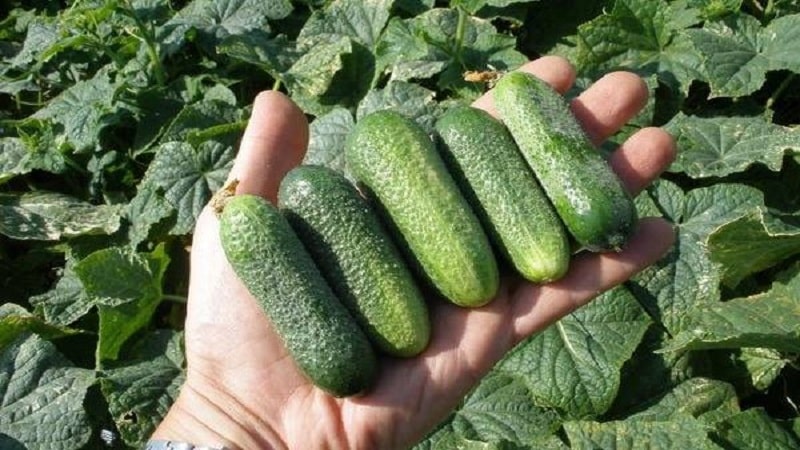
Distinctive features are presented in the table.
| Indicators | Characteristic |
| Ripening period | 45-55 days |
| Pollination type | Parthenocarpic |
| Weight | 90-95 g |
| Length | 9-10 cm |
| Form | Cylindrical |
| Coloring | Green or dark green with short light stripes and faint spotting |
| Leaves | Small size, dark green color |
| Pulp | Dense, crispy |
| Taste | Excellent, sweetish, without bitterness |
| Skin | Thin with a large number of small tubercles and white pubescence |
| Purpose | Universal |
| Productivity | 8-10 kg/m² |
| Sustainability | To olive spot, powdery mildew, cucumber mosaic virus |
| Transportability | Average |
Composition, calorie content and benefits
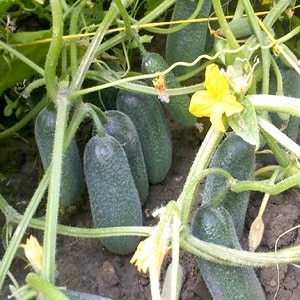 Calorie content cucumbers - 14 kcal per 100 g.
Calorie content cucumbers - 14 kcal per 100 g.
Chemical composition product:
- vitamins A, B1, B2, B4, B5, B6, B9, C, E, H, K, PP and beta-carotene;
- minerals: potassium, calcium, silicon, magnesium, sodium, phosphorus, iron, iodine, copper, selenium, fluorine, zinc.
Regular consumption of cucumbers has a positive effect on the body:
- normalizes water-salt balance;
- speeds up metabolism;
- dilates blood vessels;
- normalizes blood pressure;
- breaks down cholesterol plaques;
- dissolves stones and sand in the kidneys;
- normalizes the functioning of the pancreas;
- improves blood counts.
Hybrid agricultural technology
Cucumbers Adam grown through direct sowing and seedlings, following the diagram:
- sowing of seedlings is carried out a month before the intended planting in a permanent place;
- direct sowing and transfer of seedlings to open ground is carried out when the threat of night frosts disappears;
- Seeds are sown in the greenhouse at a soil temperature of +15 °C, air temperature - +22 °C.
Direct sowing into the ground
Hybrid seeds do not require disinfection or soaking, if they already have a colored shell. This indicates that the material has been processed in production. Seeds without a shell are disinfected in a weak solution of potassium permanganate and soaked in preparations that accelerate germination - “Epin” or “Zircon”.
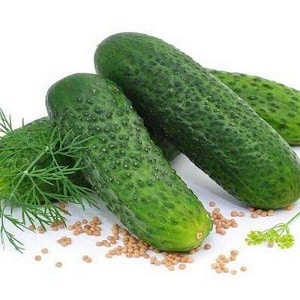 Direct sowing into the ground is carried out in the last days of May in the southern regions and in the first days of June in regions with a cooler climate. When choosing a location, focus on the south side of the site. The soil temperature should not be lower than +15 °C.
Direct sowing into the ground is carried out in the last days of May in the southern regions and in the first days of June in regions with a cooler climate. When choosing a location, focus on the south side of the site. The soil temperature should not be lower than +15 °C.
The best predecessors of cucumbers – cabbage, onions, carrots, garlic, legumes.It is advisable to avoid beds in which zucchini, pumpkin, melon, watermelon, and squash grew.
To protect open ground plantings from drafts, curtain plants (corn, sunflower) are sown nearby.
The site is prepared in advance - it is dug up in the fall and a bucket of humus is added per 1 m². In autumn, the soil is loosened and fertilized with chicken droppings mixed with ash or ready-made fertilizer “Gumi-Omi”, “Zdraven”.
Seeds are planted to a depth of 3 cm every 20 cm, watered with warm water and the beds are covered with mulch (hay, straw, sawdust).
About other varieties and hybrids of cucumber:
Early maturing hybrid of cucumbers "Hector" for open ground
Sowing seedlings
Sowing work begins at the end of April. The soil is prepared from peat, humus, and sawdust in a ratio of 2:2:1. The mixture is thoroughly mixed in a bucket, add 1 tbsp. l. superphosphate and 200 g of ash. For disinfection, pour a strong solution of potassium permanganate or treat with Fitosporin.
Moist soil is laid out in 0.5 liter containers. If necessary, the seeds are disinfected and soaked, then embedded in peat cups to a depth of 2 cm. The future seedlings are covered with film and left in a dark place at a temperature of +25 ° C. The seeds will hatch in 3-5 days.
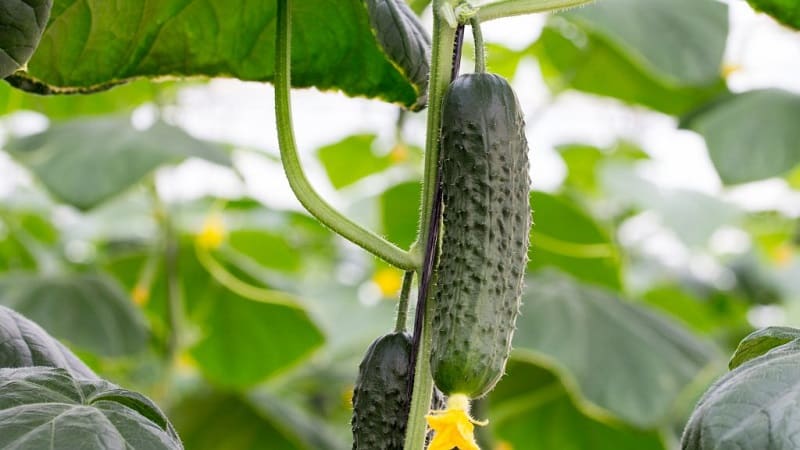
After the shoots appear, the film is removed and the containers are brought into the light. Water once a week. The seedlings grow strong and do not need feeding.
The seedlings are transferred to the ground at the end of May or at the beginning of June.. Planting pattern – 50x70 cm, 3 bushes per 1 m².
In the area, dig holes 20-25 cm deep, spill with a dark solution of potassium permanganate and plant the seedlings directly in peat cups.
Care
Cucumbers are watered every other day, 10-15 liters per 1 m²using warm rain or settled water. During drought, the bushes are given sprinkling. The plants are irrigated so that before nightfall the water evaporates from the surface of the leaves.
If possible, drip irrigation is organized on the site. The beds are covered with mulch to retain moisture and reduce the amount of weeding.
The root system of cucumbers is superficial. To form lashes and ovaries, the plant needs constant feeding with organic matter and minerals. Fertilizers applied before planting last for 2-3 weeks. Therefore, 10 days after planting the seedlings and from the moment the flowers appear after direct sowing, they begin to apply regular portions of fertilizing, alternating organic matter and minerals.

Feeding options:
- green fertilizers (infusion of nettles or tops, diluted with water in a ratio of 1:5);
- infusion of bird droppings in a concentration of 1:20;
- wood ash (200 g, pour 10 liters of water, shake and immediately water under the bush);
- yeast (50 g of pressed yeast, pour 3 liters of warm water, add 50 g of sugar and wait for fermentation);
- 10 g of superphosphate, 10 g of ammonium nitrate, 10 g of potassium salt per 10 liters of water;
- 30 g of nitroammophoska per 10 liters of water;
- ready-made compositions: “Agricola”, “Fertika”, “BioHumus”.
These compositions are suitable for root and foliar feeding. Cucumbers are watered with yeast fertilizer strictly under the bush in warm, dry weather.
Reference. The fertilizer consumption rate for young bushes is 500 ml, for adults – 1-2 liters. Seven days after feeding with ash, organic or nitrogen fertilizers are applied.
Features of cultivation and possible difficulties
Hybrid Adam grown on a hill so that the vines hang freely and do not lie on the ground. For this use:
- compost heaps: level the top, pour a 20 cm layer of soil on top, add humus and mix;
- barrels: in the fall, containers are filled with tops, mown grass, leaves mixed with soil, and a layer of soil with fertilizers is poured on top.
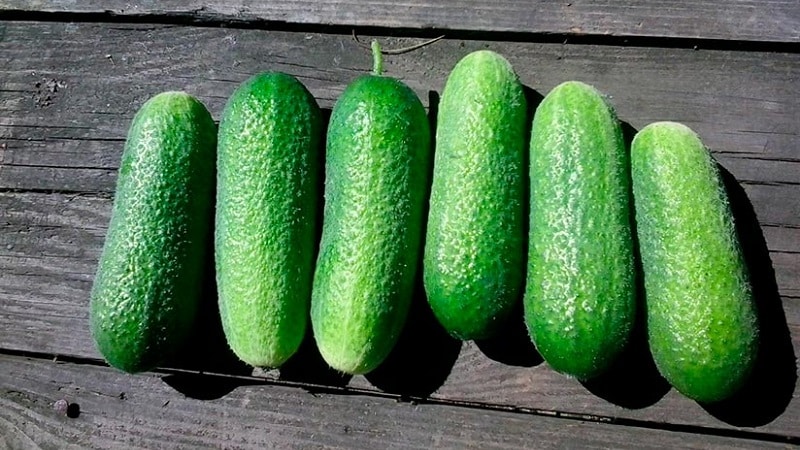
When planting on heaps, they adhere to the 60x15 cm pattern, and plant them in barrels more densely - 4-5 bushes.
Hybrid Adam, like any other parthenocarpic, needs molding with a garter to the trellis:
- in the axils of the first five leaves, shoots, flowers and ovaries that restrain the growth of the main stem are removed;
- the main lash is tied up as it grows;
- the stepsons pinch over the second leaf to a whip height of 0.5 m, over the third – up to 1 m, over the fourth – up to 1.5 m, over the fifth – up to 2 m;
- the lash is pinched or thrown over the crossbar as soon as it grows to the top of the trellis or to the ceiling of the greenhouse.
Diseases and pests
Hybrid Adam has immunity to olive spot, powdery mildew and cucumber mosaic virus. At the same time, he is prone to illness downy mildew or downy mildew.
It appears as yellow or brown spots on the leaves and a purple-gray coating on the reverse side. Without treatment, the leaves turn yellow and the plant dies. The fight against fungus is complicated by the early ripeness of the hybrid.
Harvesting takes place from July to September, so fungicide treatment is excluded. The best way to preserve plantings is to prevent infection.
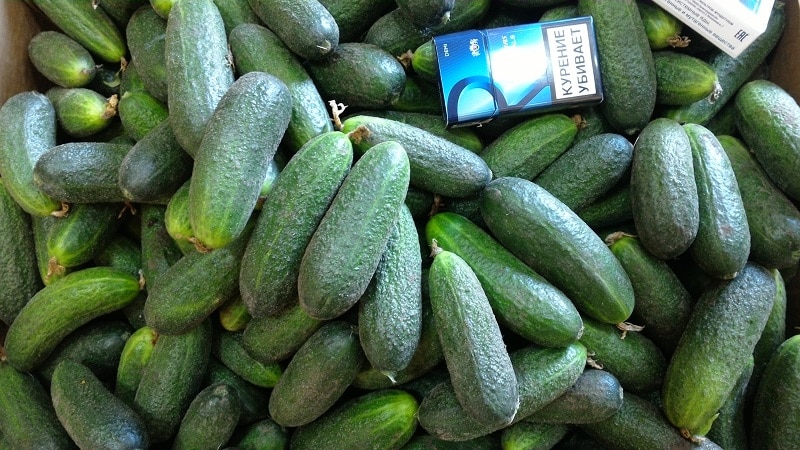
Prevention:
- spring disinfection of soil with copper sulfate (50 g/10 l/1 m²) or “Fitosporin”;
- regular loosening and cleaning of weeds;
- removal of affected bushes with rhizomes;
- compliance with crop rotation;
- treatment with whey with iodine (10 drops per 1 l);
- feeding with vitamin compositions “Energen Extra”, “Novosil”.
Preventive spraying is carried out from the moment of flowering until the end of the season. Whey is used for treatment once every 10 days so as not to acidify the soil.
To fight with melon aphid, whitefly And spider mite use folk remedies:
 30 g of dry dandelion roots and leaves are poured into 1 liter of water and left for three hours. Spray cucumbers 2 times every 7 days.
30 g of dry dandelion roots and leaves are poured into 1 liter of water and left for three hours. Spray cucumbers 2 times every 7 days.- Hogweed root is poured with 10 liters of water. After 24 hours, use the infusion to treat the bushes once every seven days.
- 100 g of dry Datura raw material is poured into 1 liter of warm water. After 12 hours, filter and treat the bushes once every 10 days.
- A 10 liter bucket is half filled with dry marigold inflorescences and filled with warm water. Leave for two days, filter and dissolve 25 ml of liquid soap in the infusion. The bushes are treated in the evening once every seven days.
The fight against slugs is carried out manually. They go hunting at night when the pest is active. To treat the leaves, use a solution of ammonia (4 tablespoons per 2 liters of water), sprinkle the area with tobacco, mustard or hot pepper.
Cucumber plantings often attract mole crickets. To get rid of insects, any vegetable oil is poured into the burrows. It clogs the pest's respiratory tract. To scare away mole crickets, marigolds are planted in the beds, fish scales, eggshells, and pine needles are laid out.
Harvesting and application
The fruiting period of the hybrid is long. Harvesting begins in July and ends with the onset of frost.
Fruits are not prone to overgrowth. Greens that are not harvested on time are slightly barreled, but this does not affect their taste.
Reference. The peculiarity of cucumbers is their rough, prickly surface due to the large number of small tubercles.The fruits are used for fresh consumption and preservation.
Thin skin does not allow the crop to be stored for a long time, dents often appear on the surface.
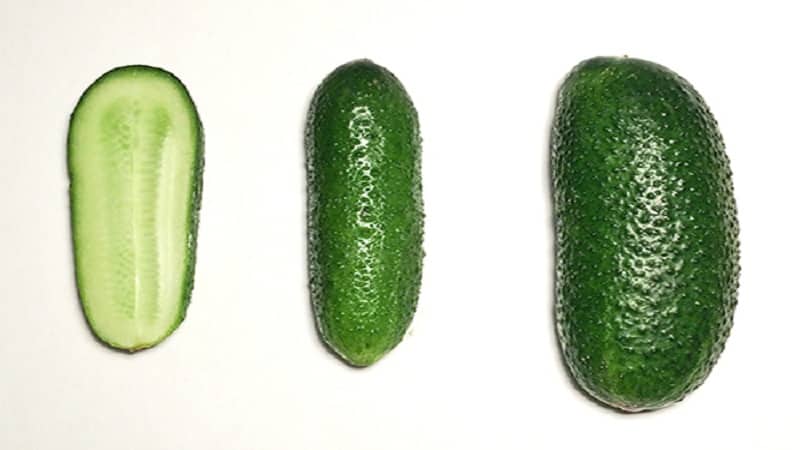
Advantages and disadvantages
Advantages of the hybrid Adam:
- high productivity;
- fruit evenness;
- resistance to major diseases;
- early ripeness;
- extended fruiting;
- the pulp is dense, not bitter;
- does not require pollinating insects;
- the fruits do not outgrow.
Flaws – the need for molding and gartering, a tendency to peronosporosis.
Reviews
 About the hybrid Adam There are both positive and negative reviews.
About the hybrid Adam There are both positive and negative reviews.
Ivan, Belgorod: “Adam will never plant cucumbers on my plot again. The greens are prickly, dry, tasteless, and also barrely. On the plus side, cucumbers have no bitterness or voids, so they used the harvest for winter harvesting.”.
Oksana, Borisoglebsk: “I’ve been growing this wonderful hybrid Adam for three years in a row. It is easy to care for. The culture pleases with its high yield and excellent taste of fruits. The plant requires proper shaping, frequent watering and fertilizing. Otherwise, there are no worries with him.".
Makar, Kalach: “I plant cucumbers in 200 liter barrels. I haven’t been able to breed a mole cricket on my property for years now, but this method saves me from unnecessary work. I like the Adam hybrid for its ease of planting and care, long-lasting fruiting".
Conclusion
Adam is an unpretentious hybrid, suitable for cultivation in all regions of the country. With minimal labor costs and material investments, it provides a rich harvest. The plant bears fruit until late autumn, allowing you to enjoy the taste of crispy cucumbers without bitterness.
Agricultural technology of the crop includes the molding of parthenocarpics, timely application of organic matter and minerals, frequent watering and preventive treatments against downy mildew.